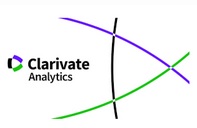Improvement of discriminative learning in children: differential outcomes and manual administration of different types of reinforcement
Supporting Agencies
- Spanish Ministry of Economy and Competitiveness
- Universidad Autonoma de Chile
Abstract
In recent years, several studies have demonstrated that discriminative learning is facilitated when each association to be learned is always followed by a unique outcome. This way of providing outcomes was called the differential outcomes procedure (DOP). The aim of the study reported here was to assess whether the DOP could improve learning of symbolic conditional discriminations in 5- and 7-year-old children when performing a paper-and-pencil task using different types of training in which: 1) reinforcers were given after correct choices (+), 2) reinforcers were withdrawn when errors were made (-), or 3) a combination of both (+/-). In Experiments 1a and 1b secondary reinforcers were used along with primary reinforcers, while in Experiments 2a and 2b only primary reinforcers were used. Participants showed better performance when differential outcomes were arranged regardless of the type of reinforcers (secondary plus primary or only primary) and the different strategies of reinforcement (+, -, or +/-). These results add to those found by Martínez et al. (2009, 2013) and demonstrate that the beneficial effect of the DOP on discriminative learning is also independent of the way in which the stimuli and the outcomes are presented, facilitating its use in applied contexts.Downloads
References
Easton, A. (2004). Differential reward outcome learning in adult humans. Behavioural Brain Research, 154, 165-169. doi: 10.1016/j.bbr.2004.02.023
Estévez, A. F. (2005). The differential outcomes effect: a useful tool to improve discriminative learning in humans. The Behavior Analyst Today, 6, 216-220.
Estévez, A. F. y Fuentes, L. J. (2003). Differential outcomes effect in four-year- old children. Psicológica, 24, 159-167. Recuperado de http://www.uv.es/revispsi
Estévez, A. F., Fuentes, L. J., Mari-Beffa, P., González, C. y Álvarez, D. (2001). The differential outcomes effect as useful tool to improve conditional discrimination learning in children. Learning and Motivation, 1(32), 48-64. doi: 10.1006/lmot.2000.1060
Estévez, A. F., Overmier, J. B., Fuentes, L. J. y González, C. (2003). Differential outcomes effect in children and adults with Down syndrome. American Journal of Mental Retardation, 108(2), 108-116. doi: 10.1352/0895-8017(2003)108
Estévez, A. F., Vivas, A. B., Alonso, D., Marí-Beffa, P., Fuentes, L. J. y Overmier, J. B. (2007). Enhancing challenged students´ recognition of mathematical relations through differential outcomes training. The Quarterly Journal of Experimental Psychology, 60(4), 571-580. doi: 10.1080/17470210600820039
Joseph, B., Overmier, J. B. y Thompson, T. (1997). Food and nonfood related differential outcomes in equivalence learning by adults with Prader-Willi syndrome. American Journal of Mental Retardation, 4, 374-386. Recuperado de http://www.researchgate.net
Legge, E. L. G. y Spetch, M. L. (2009). The differential outcomes effect (DOE) in spatial localization: An investigation with adults. Learning and Motivation, 40, 313-328. doi: 10.1016/j.lmot.2009.03.002
Lewis, M. D., Lamm, C., Segalowith, S. J., Stieben, J. y Zelazo, P. D. (2006). Neurophysiological correlates of emotion regulation in children and adolescents. Journal of Cognitive Neuroscience, 18(3), 430-443. doi: 10.1162/jocn.2006.18.3.430
López-Crespo, G. y Estévez, A. F. (2013). Working memory improvement by the differential outcomes procedure. En S.H. Clair-Thompson (Ed.), Working memory: Developmental differences, component processes, and improvement mechanism (pp. 145-157). New-York, NY: Nova Publishers.
López-Crespo, G., Plaza, V., Fuentes, L. J. y Estévez, A. F. (2009). Improvement of age-related memory deficits by differential outcomes. International Psychogeriatrics, 21, 503-510. doi: 10.1017/S1041610209008576
Maki, P., Overmier, J. B., Delos, S. y Gutman, A. J. (1995). Expectancies as factors influencing conditional discrimination performance of children. The Psychological Record, 45, 45-71. Recuperado de http:/ http://psycnet.apa.org/psycinfo
Martínez, L., Estévez, A. F., Fuentes, L. J. y Overmier, J. B. (2009). Improving conditional discrimination learning and memory in fie-year-old children: DOE using different types of reinforcement. The Quarterly Journal of Experimental Psychology, 62(8), 1617-1630. doi: 10.1080/17470210802557827
Martínez, L., Flores, P., González-Salinas, C., Fuentes, L. J. y Estévez, A. F. (2013). The effects of differential outcomes and different types of consequential stimuli on seven-year-old children’s discriminative learning and memory. Learning and Behavior, 41, 298-308. doi: 10.3758/s13420-013-0105-y
Martínez, L., Marí-Beffa, P., Roldán-Tapia, D., Ramos-Lizana, J., Fuentes, L. J. y Estévez, A. F. (2012). Training with differential outcomes enhances discriminative learning and visuospatial recognition memory in children born prematurely. Researh in Developmental Disabilities, 33, 76-84. doi: 10.1016/j.ridd.2011.08.022
Miller, O. T., Waugh, K. M. y Chambers, K. (2002). Differential outcomes effect: increased accuracy in adults learning kanji with stimulus specific rewards. The Psychological Record, 52, 315-324. Recuperado de http://opensiuc.lib.siu.edu/
Mok, L. W., Estévez, A. F. y Overmier, J. B. (2010). Unique outcome expectations as a training and pedagogical tool. Psychological Record, 60(2), 227-248. Recuperado de http:/ http://opensiuc.lib.siu.edu/
Mok, L. W. y Overmier, J. B. (2007). The differential outcomes effect in normal human adults using a concurrent-task within-subjects design and sensory outcomes. The Psychological Record, 57, 187-200. Recuperado de http://opensiuc.lib.siu.edu/
Mok, L. W., Thomas, K. M., Lungu, O. V. y Overmier, J. B. (2009). Neural correlates of cue-unique outcome expectations under differential outcomes training: An fMRI study. Brain Research, 1265, 111-127. doi: 10.1016/j.brainres.2008.12.072
Peterson, G. B. y Trapold, M. A. (1980). Effects of altering outcome expectancies on pigeons' delayed conditional discrimination performance. Learning and Motivation, 11, 267-288. doi: 10.1016/0023-9690(80)90001-6
Plaza, V., Estévez, A. F., López-Crespo, G. y Fuentes, L. J. (2011). Enhancing recognition memory in adults through differential outcomes. Acta Psychologica, 136, 129-136. doi: 10.1016/j.actpsy.2010.11.001
Posner, M. I. y Rothbart, M. K. (2009). Toward a physical basis of attention and self-regulation. Physics of Life Reviews, 6, 103-120. doi: 10.1016/j.plrev.2009.02.001
Trapold, M. A. (1970). Are expectancies based upon different positive reinforcing events discriminably different? Learning and Motivation, 1, 129-140. doi: 10.1016/0023-9690(70)90079-2
Urcuoli, P. J. (2005). Behavioral and associative effects of differential outcomes in discrimination learning. Learning & Behavior, 33, 1-21. doi: 10.3758/BF03196047
Walters, R. H. y Parke, R. D. (1964). Arousal, isolation, and discrimination learning in children. Journal of Experimental Child Psychology, 1, 163-173. doi: 10.1016/0022-0965(64)90018-9
The works published in this journal are subject to the following terms:
1. The Publications Service of the University of Murcia (the publisher) retains the property rights (copyright) of published works, and encourages and enables the reuse of the same under the license specified in paragraph 2.
© Servicio de Publicaciones, Universidad de Murcia, 2022
2. The works are published in the online edition of the journal under a Creative Commons Reconocimiento-CompartirIgual 4.0 (legal text). You can copy, use, distribute, transmit and publicly display, provided that: i) you cite the author and the original source of publication (journal, editorial and URL of the work), ii) are not used for commercial purposes, iii ) mentions the existence and specifications of this license.
This work is licensed under a Creative Commons Attribution-ShareAlike 4.0 International License.
3. Conditions of self-archiving. Is allowed and encouraged the authors to disseminate electronically pre-print versions (version before being evaluated and sent to the journal) and / or post-print (version reviewed and accepted for publication) of their works before publication, as it encourages its earliest circulation and diffusion and thus a possible increase in its citation and scope between the academic community. RoMEO Color: Green.















